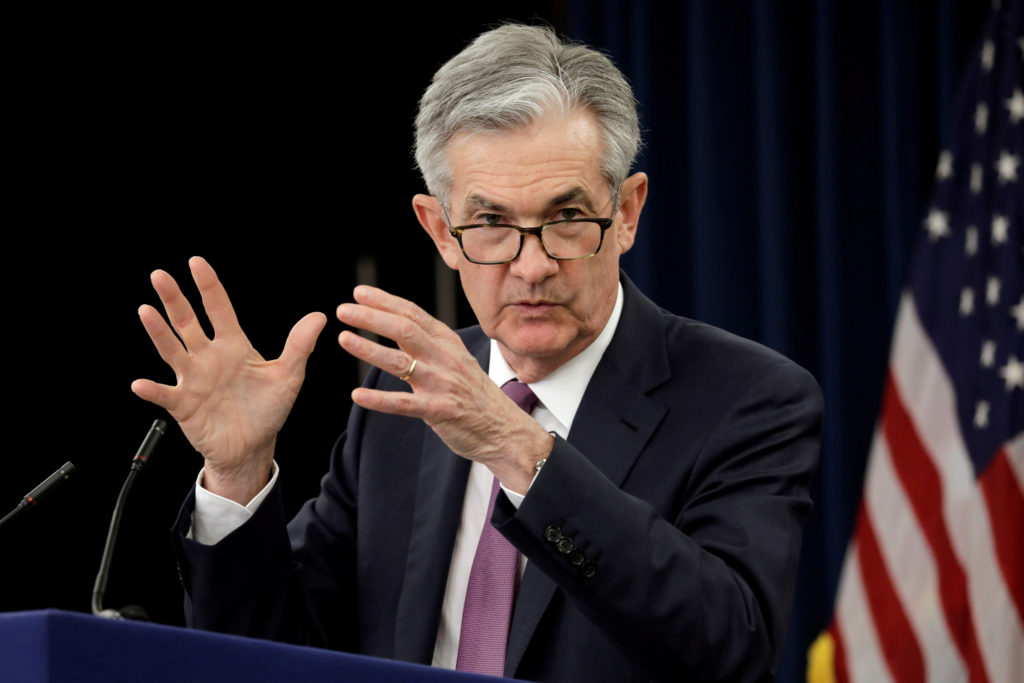FED may trim the size of rate hikes from December
A Federal Reserve meeting is approaching and, once again, the market is looking for guidance.

Traders and investors want FED Chair Powell to provide some sort of guidance about the size of future rate changes after Wednesdays (likely) 75-bps increase.
>> Many central banks reduced the size of their rate hikes
Traders and investors want FED Chair Powell to provide some sort of guidance about the size of future rate changes after Wednesdays (likely) 75-bps increase. Mr. Steve Barrow, Head of Standard Bank G10 Strategy, thinks it’s not in the Fed’s interest to give any such guidance but, at the same time, he thinks that the Fed will drop down to a 50-bps hike in December and pause there.
When should central banks use guidance? Mr. Steve Barrow said that it would be only appropriate in certain – exceptional – circumstances. More specifically, it should only be used when central banks run up against the zero lower bound but need to ease monetary policy further. They can do this by operating further down the curve, via quantitative easing, for instance, or they can use policy rate guidance.
In using the latter, the central bank can commit to keeping policy rates down for an extended period of time in the expectation that this will lower the yield curve and so add more monetary impetus to the economy. Quite clearly, many central banks, not least the Fed, have used this in the past when they have run up against the zero lower bound problem.
Almost by definition, there is no case to be made for guidance when policy rates are above the zero lower bound and that’s for a number of reasons. One is that the central bank has no reason to try to extend monetary policy through the curve by committing to future policy changes. Another is that if the central bank basically ‘tells’ the market what is going to happen in the future, there is no room for the market to provide its own feedback; it will simply price in what the central bank has ‘told’ it to price in. This can be disadvantageous to the central bank. Say, for instance, that the market believes that inflation will suddenly surge or fall.
This is important information for the central bank but it could be lost if the market believes that the central bank will follow its guidance and refuses to price future policy rates away from the guidance levels. A corollary of this is that guidance serves little purpose if the economic and financial market outlook is particularly uncertain.
For in this environment the central bank is likely to have to review its guidance; it might ‘promise’ one thing but deliver another and this damages its credibility. The Fed itself suffered from this earlier in the year when Powell suggested at the May meeting that the Fed would need to increase rates 50-bps at the meetings in June and July but, in the event hiked rates 75-bps at each meeting.
>> The FED’s policy and impacts on Vietnam
How does all of this have a bearing on this week’s meeting? For a start, the Fed is clearly far from the zero lower bound and hence there’s dubious merit in giving guidance at this stage. In addition to this, it is hard to argue that the outlook is more certain than it was back in the summer when the Fed made that mistake; if anything, we’d argue that it is more uncertain and hence Fed guidance is even more likely to be wrong. But does this mean that the Fed will shy away from any such guidance?
Not necessarily. As Mr. Steve Barrow pointed out with Powell’s comments in May about future policy, the Fed won’t necessarily let economic rationality get in the way of a market tip-off. But even if Powell does what we hope he will do, which is to resist making any guidance, this does not rule out a drop down to a 50-bps rate hike at the December meeting. Indeed, this is still our call at the moment. Of course, that call could change depending on how the data come through and how other events unfold.
“We retain our flexibility to change our mind and so should the Fed in our view by omitting any guidance this week that smacks of a “promise” to trim the size of rate hikes from December. Maintaining this flexibility might cost equity and bond market bulls this week but, as long as the Fed does drop down in December any losses made now could be recaptured in the future once the Fed delivers a smaller rate hike”, said Mr. Steve Barrow.








